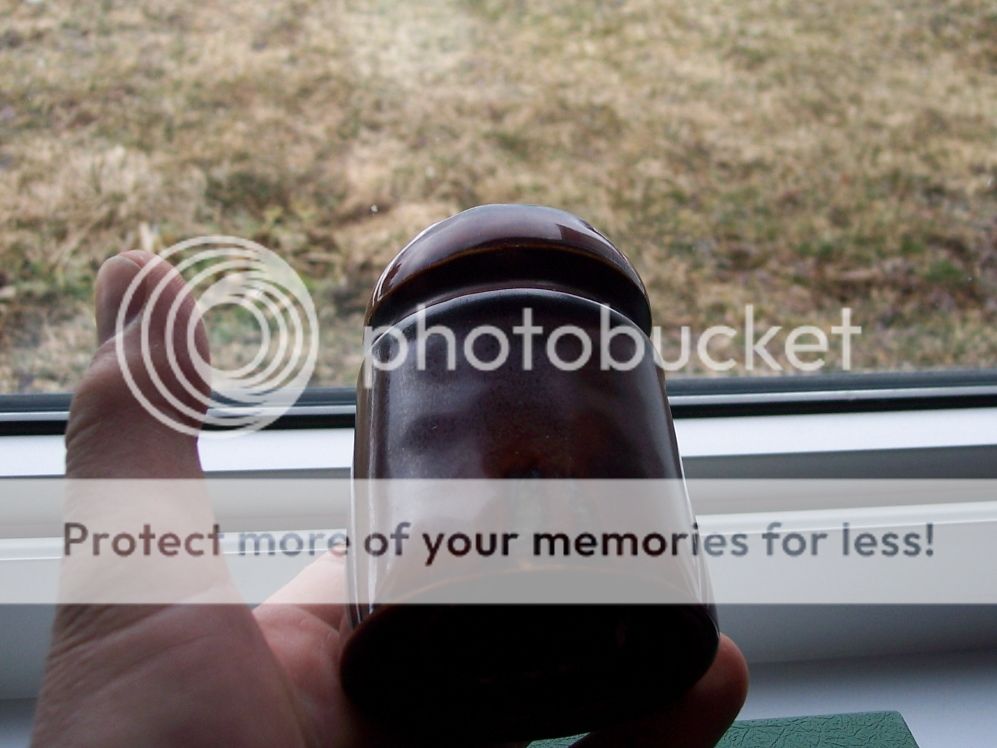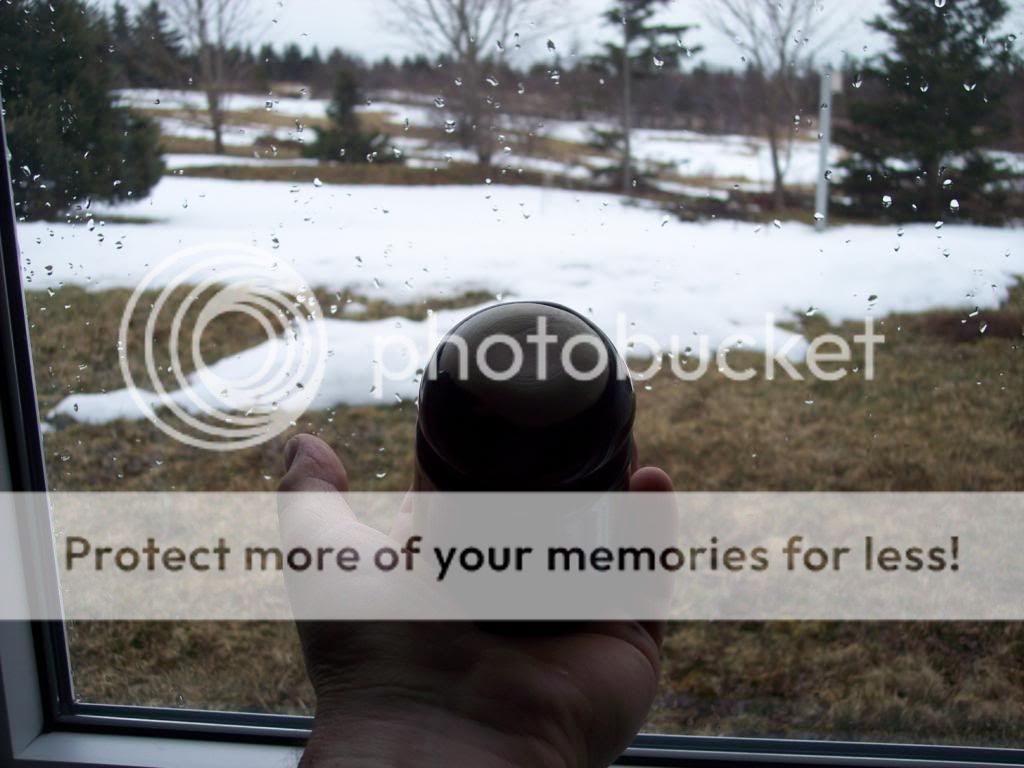deenodean
Well-Known Member
Got this one for FREE this weekend. It is a plain brownie with the brown coating missing of the top and a few nice flaws. There are no markings on it but I imagine there is a book # for it somewhere.









ORIGINAL: BillinMo
Interesting piece - it's a "pony" typically used for local telephone lines.
I don't recall seeing many with a top rest like that, but I don't think it would affect value any. As Jim described, any porcelain insulator will have a rest of some sort. Usually it was done by a worker dipping the rest spot of the unfired insulator in a vat of paraffin, then handing it off to a glaze worker who dipped the insulator in a vat of glaze. The glaze wouldn't stick to the paraffin, and the paraffin would burn off in the kiln. The top rest could have just been the worker's preference, and most of the others just liked to use the base as the rest.
Free insulator is always a good thing!
The top is more of a cream color than the darkness in the picture. I will trade for a jar ( or something else ) I don't have if someone wants it in their collection. 2 small nicks on the underside where the treads starts, also 7 finishing flaws on and near the bottom of the skirt . Any idea of age and where it could have been made?